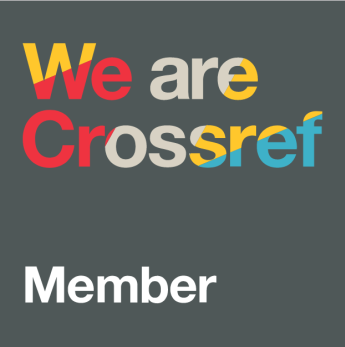UJI KETERBACAAN WACANA PADA BUKU TEKS BAHASA INDONESIA KELAS V SD NEGERI DI KECAMATAN WONOGIRI
DOI:
https://doi.org/10.21831/lt.v2i2.7373Keywords:
keterbacaan wacana, teknik clozeAbstract
Penelitian ini bertujuan untuk mendeskripsikan tingkat keterbacaan wacana dalam buku teks BSE bahasa Indonesia, mendeskripsikan tingkat keterbacaan wacana dalam buku teks NONBSE, dan mendeskripsikan perbedaan tingkat keterbacaan wacana antara buku teks BSE dengan buku teks NONBSE setelah diukur dengan alat ukur uji keterbacaan teknik cloze. Jenis penelitian ini adalah penelitian analisis konten. Menggunakan populasi dan sampel buku dan sekolah. Teknik pengumpulan data dengan mengerjakan lembar jawab tes cloze secara objektif. Teknik analisis data dengan mengoreksi lembar tes cloze. Hasil penelitian ini: (1) persentase rerata skor keterbacaan BSE 1 57,60% dan persentase rerata skor keterbacaan BSE 2 59,64%; (2) persentase rerata skor keterbacaan NONBSE 56,55%; (3) hasil uji keterbacaan wacana pada buku BSE dan NONBSE menunjukkan sama-sama menunjukkan presentase yang berada pada kategori instruksional.
Kata Kunci: keterbacaan wacana, teknik cloze
THE READABILITY DISCOURSES IN INDONESIAN LANGUAGE TEXTBOOKS GRADE V OF PUBLIC ELEMENTARY SCHOOLS IN WONOGIRI DISTRICT
Abstract
This study aims to describe the readability levels of the discourses in electronic school books (ESBs) of the Indonesian language, to describe the readability levels of the discourses in non-electronic school books (NONESBs), and to describe the difference in the readability levels of the discourses between ESBs and NONESBs after they are assessed by the cloze technique as a readability measurement instrument. The type of study was a content analysis. The research population and sample of the book and school.. The data were collected by asking respondents to do the cloze test objectively. They were analyzed by checking the cloze test sheet in accordance with the answer keys for further analysis. The results of the study are as follows. (1) on the ESB 1 produced an average readability score percentage of 57, 60% and on the ESB 2 produced an average readability score percentage of 59, 64%. (2) on the NONESB an average readability score percentage of 56.55%. (3) The result of the readability test of the discourses both on ESBs and NONESB showed the same precentage in the category of instructional.
Keywords: readability of discourses, cloze techniqueReferences
Depdiknas. (2005). Peraturan Menteri Pendidikan Nasional Nomer 19 tahun 2005, tentang Standar Nasional Pendidikan.
Harjasujana, A. S. & Mulyati, Y. (1996). Membaca 2. Jakarta: Departemen Pendidikan dan Kebudayaan, Direktorat Jendral Pendidikan Dasar dan Menengah, Bagian Proyek Penataran Guru SLTP setara D-III.
Tarigan, H.G. (1993). Telaah buku teks Bahasa Indonesia. Bandung: Angkasa.
Tarigan, H.G (1993). Pengajaran wacana. Bandung: Angkasa.
Zuchdi, D. (1993). Panduan penelitian analisis konten. Yogyakarta: Lembaga Penelitian IKIP Yogyakarta.
Downloads
Published
How to Cite
Issue
Section
Citation Check
License
LingTera allows readers to read, download, copy, distribute, print, search, or link to its articles' full texts and allows readers to use them for any other lawful purpose. The journal allows the author(s) to hold the copyright without restrictions. Finally, the journal allows the author(s) to retain publishing rights without restrictions.
- Authors are allowed to archive their submitted articles in an open-access repository.
- Authors are allowed to archive the final published article in an open-access repository with an acknowledgment of its initial publication in this journal.

Psychology, Evaluation, and Technology in Educational Research is licensed under a Creative Commons Attribution-ShareAlike 4.0 International License.
Based on a work at https://petier.org/index.php/PETIER.










